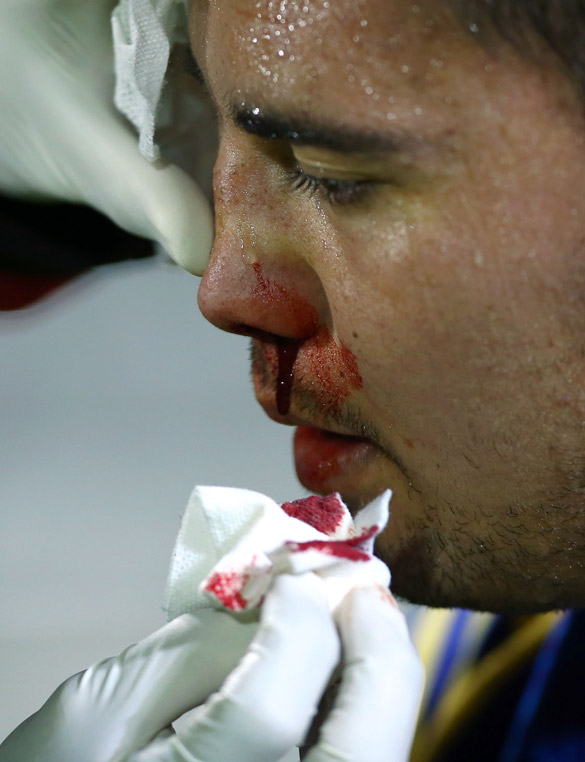Bleeding and wound management
Whenever there is a risk of blood exposure, the rescuer must protect themselves and other players. Blood can carry serious infections with long-term health implications such as the Human Immunodeficiency Virus (HIV), Hepatitis B or Hepatitis C. These infections can result in liver failure, liver cancer or even death up to 20 years after exposure.
Visible blood must be treated with respect. The rescuer must wear gloves and use clean single-use sterile dressings which are disposed of in line with local infection control policy. Do not use towels or other items which may be used by other players when contaminated with blood.
Players with visible blood should have it removed at the first opportunity, including changing of contaminated clothing. Those with visible active bleeding should be removed and not return until the bleeding is stopped and visible blood removed, depending on the rules for the level of the game at which you are playing.
Visible bleeding is simply treated by pressure and elevation. Pressing on the bleeding area with a sterile dressing and, if possible, holding it above the level of the heart (so less blood reaches it) will stop most bleeding wounds over 30 seconds to 1 minute. Those that don’t should be maintained with pressure, elevation through an absorbent sterile dressing and more experienced medical assistance sought.
Severe External Bleeding Steps:
- Apply direct pressure – to the wound over a sterile wound dressing or clean cloth.
- Summon help – provide the call handler with details of the site of the injury and extent of bleeding.
- Once bleeding under control - secure the dressing with a bandage tight enough to maintain pressure but not impair circulation.
- Consider Shock – help the casualty to lie down on a blanket and raise and support their legs above the level of the heart.
- If blood loss persist – Reapply direct pressure over the dressing.
- Support the injured part – with a ling and/or bandage.
- Monitor and record – the casualties vital signs while awaiting the arrival of help.
In the context of cardiac arrest and cardio-pulmonary resuscitation (CPR), if there is blood around the mouth, then wear gloves, use a pocket mask or face shield or even consider compression-only CPR.

First aiders should wear gloves and use clean single-use sterile dressings when removing blood